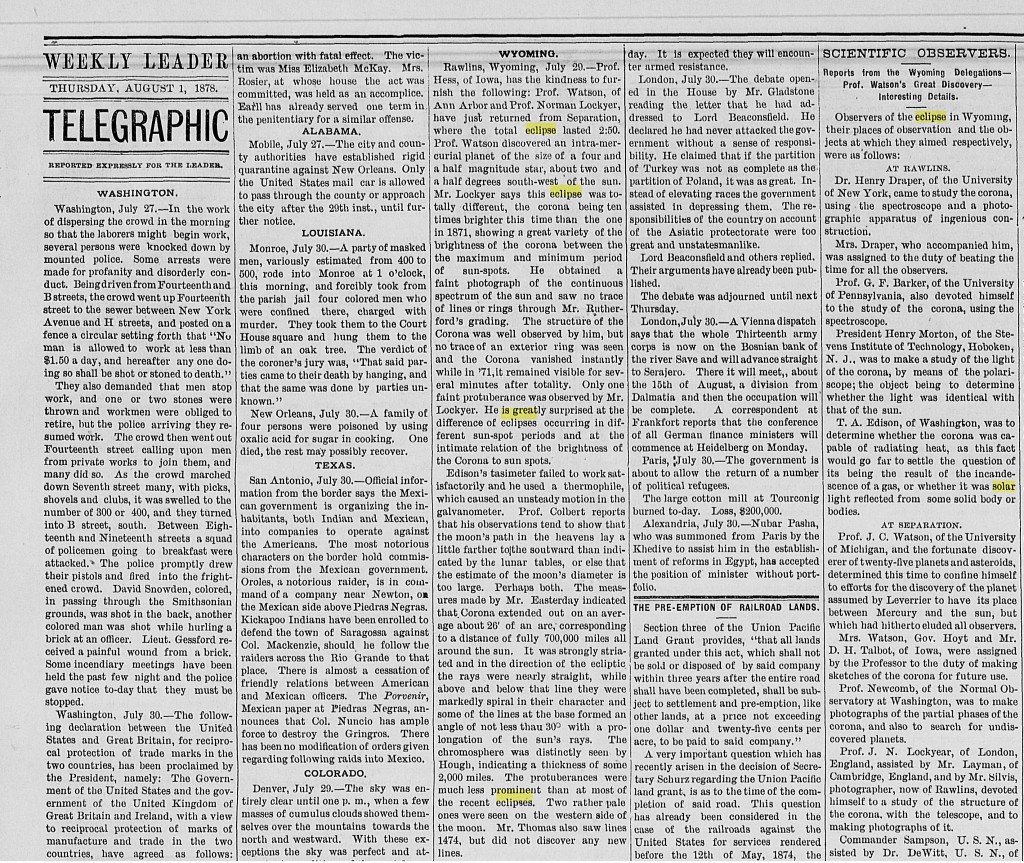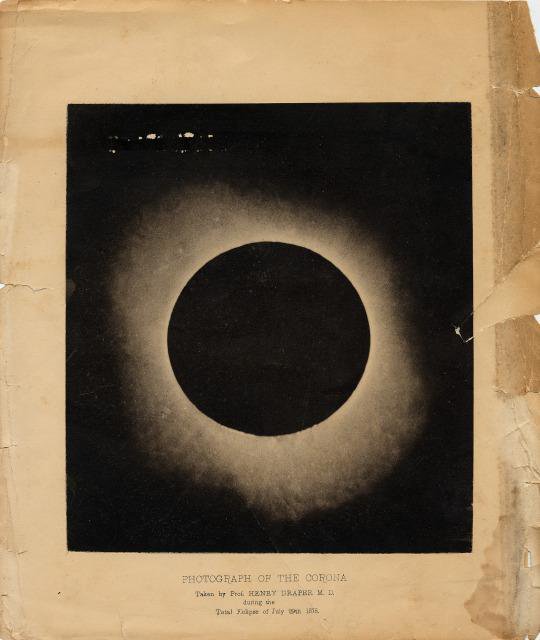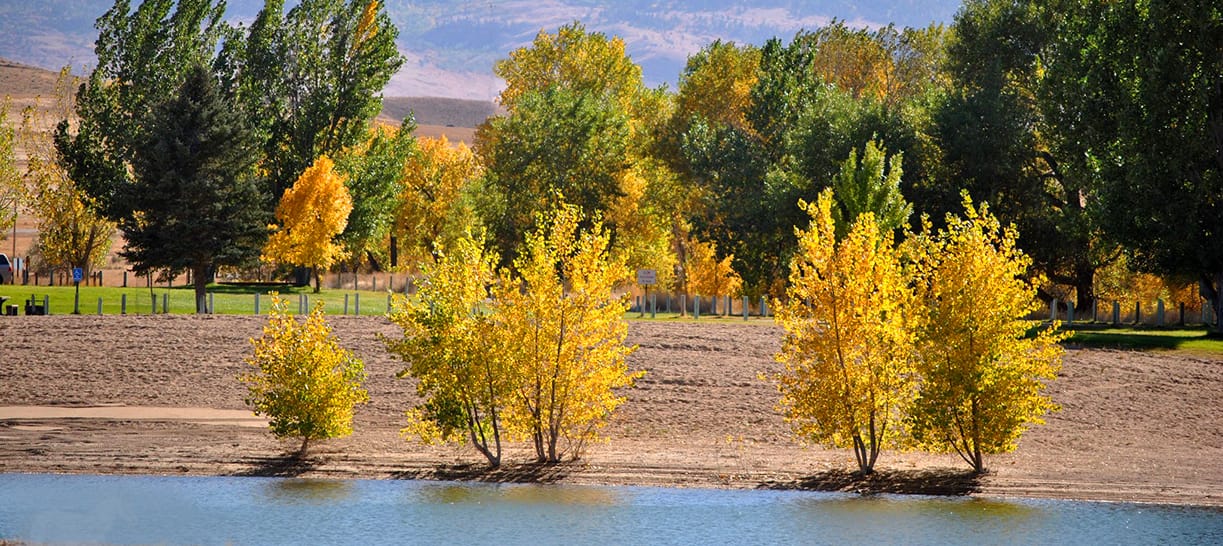The 1878 Total Solar Eclipse
The path of the 1878 eclipse was projected to cross diagonally across North America, from Alaska through the western states and then down to the Gulf Coast. Given this opportunity so close to home, many American scientists and astronomers headed west to conduct various stellar observations. It is not surprising that, from their viewpoint, the 1878 eclipse was the astronomical event of the year.
One travel destination was Rawlins, Wyoming. Newspaper accounts report that the visitors were treated well. In turn, curious bystanders asked questions about the strange instruments, their research and the nature of the heavens -- which the newcomers were only too happy to answer.
Finally, after much waiting, planning and anticipation, the eclipse occurred as predicted. In the mid-afternoon of July 29, the moon moved in front of the sun, and the day suddenly turned to night for two minutes and fifty seconds. An Atlantic City resident reported that chickens and birds decided to roost, while a herd of cattle passing through the area "stopped and did not move again until light appeared." Flying grasshoppers "closed their wings" and fell from the sky "in quite a shower." Stars typically only seen at night were now quite visible.
 Cheyenne Weekly Leader Telegraph. Thursday, August 1, 1878. Wyoming. "Scientific Observers. Reports from the Wyoming Delegations -- Prof. Watson's Great Discovery-Interesting Details." Wyoming State Archives (newspapers.wyo.gov)
Cheyenne Weekly Leader Telegraph. Thursday, August 1, 1878. Wyoming. "Scientific Observers. Reports from the Wyoming Delegations -- Prof. Watson's Great Discovery-Interesting Details." Wyoming State Archives (newspapers.wyo.gov)Scientific Findings from the 1878 Total Solar Eclipse
Most scientific efforts focused on the corona and were generally successful. One scientist, a Professor Colbert, made notes about the moon's orbit. James Craig Watson, an astronomer from Michigan, hoped to prove the existence of another planet, named Vulcan, orbiting between Mercury and the Sun. Watson and others believed that confirmation of this elusive world would explain the slight deviations astronomers had noticed in Mercury's orbit. During his observations, Watson claimed he had successfully discovered the existence of Vulcan (he didn't). Nonetheless, when Watson died two years later, he still believed he had solved an astronomical mystery.
Another interesting spectator was the famous inventor, Thomas Edison. He came west with the noted astronomer Henry Draper, who had hoped to photograph the corona. Edison wanted to measure small changes in the sun's heart with his newest invention, the tasimeter. Draper's efforts were successful, but Edison's weren't. His instrument was too sensitive for the extremes in temperature, and according to one writer, it burned up.
 The Total Solar Eclipse of July 29, 1878 photographed by Henry Draper (1837-1882), a pioneer of history. (website source: Pictures in History)
The Total Solar Eclipse of July 29, 1878 photographed by Henry Draper (1837-1882), a pioneer of history. (website source: Pictures in History)The eclipse of 1878 is equated with the Edison's discovery of the incandescent light bulb. After the heavenly show was over, Edison and a friend went to the West Coast. Two weeks later they returned to Carbon County for a hunting and fishing trip. It's said that when his bamboo fishing pole fell into the campfire, Edison observed with interest how the fibrous strands glowed... and thus the light bulb was born! But this story, as one Wyoming historian has pointed out, is myth.
Discover the 2017 Total Solar Eclipse
To discover the 2017 WYO Parks Eclipse, sponsored by Sierra Trading Post, visit Boysen, Glendo, Guernsey or EKW State Parks on August 21, 2017. Day passes that include a free pair of eclipse glasses from Sierra Trading Post are available online at wyoparks.org.
Featured Image: Prof. Henry Draper's eclipse party with telescopes in Rawlins, Wyo., in the summer of 1878. Thomas Edison is second from the right. (Carbon County Museum photo.)



